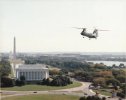I have never worked with them specifically.@RobLyman any more info you can share about the 12th Aviation Battalion and their training and readiness requirements?
All IPs in the Army and Army National Guard used to go through the IP Course (IPC) at Ft Rucker or one of the National Guard training centers (EAATS or WAATS). I went to WAATS. Some of the courses done by ARNG are better than their AD equivalent. I haven't seen one that was worse. Having said that, the IP training track was changing just as I retired. They allowed for model specific IP training (ie 60L to 60M) to be done at the unit. As I left, they were working on allowing in-house training for both initial IPs and MTPs. In my opinion, that was a mistake and a serious standardization and safety problem. But what the heck? I was a dinosaur retiring. With the accident IP having around 1000 hours, he most likely was trained at the unit. The variation in IP quality could vary tremendously. My guess would be that with only 1000 hours as an IP, I seriously doubt the 12th had any elevated PC requirements over general Army standards. I would similarly be surprised if evaluation in the DC helo routes was not a part of their initial PC evaluation and annual APART. The Army ATM suggests that if tasks are not evaluated both day and night, they should be evaluated in the more demanding mode. This would mean it is VERY likely the NVG APART would require flight on the DC routes. I'm not 100% sure it was required, but according to the regs, it should have been required. So any argument that they shouldn't have been flying there during a "training flight" is bullshit and uninformed.
I have flown through NYC helicopter routes a LOT. I delivered and picked up new aircraft from Lakehurst and doing a first VFR flight there was fun and a great learning/teaching experience for pilots that I took with me. Any specific questions about the DC routes are better answered by someone who has flown those, but I think my experience in NYC is similar to the DC routes. One thing that is worth mentioning...Anytime you fly a route so frequently, the chance of complacency creeps in. This also applies to the controllers constantly guiding aircraft through those routes. Having mostly experienced pilots in those aircraft can lull a controller into not being prepared for their encounter with an inexperienced crew in a Black Hawk.
I know this is a bit of Monday morning quarterbacking, but if I flew that route I would be at 100', not 200', especially with an aircraft coming into runway 33. But then again, my first 1500 hours of helo flying had a majority of my night time being unaided over the water. Most Army aviators I know detested flying unaided, much less unaided over (open) water. It looks like the Potomac is about 3/4 nm across right there. Not wide enough to frighten Army aviators, but perhaps too narrow for a 360 for spacing. Note: Did anyone see the higher resolution video where you can actually see the helicopter prior to and during the accident? They had a cruise nose-down attitude suggesting 100 kts or more airspeed. Those with 60 experience will know that they don't pitch down or up much with small or gradual changes in altitude. While they may have been within airspeed restrictions for the route if there are any, it wouldn't be a bad idea to have recommended speeds for the route. Maybe they do. Does anyone know? This would help for spacing and, if set low enough, allow for 360 degree turns for spacing without a risk to noise abatement issues or ground obstacles over the city.


